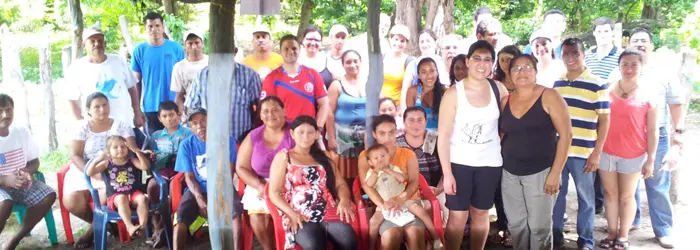Telemedicine in El Salvador
01/08/2014

Moving from a consultation under the trees to using a webcam
Doña Rosita helps the little girl sit in front of the monitor and adjusts the high definition webcam. Despite the storm, the Internet signal is quite strong at Tasajera Island. “That’s fine,” says Doctor Daniel Pérez from his office in the city of San Salvador, El Salvador, many miles away. The remote medical consultation then begins. This is what the doctor does twice a day for every islander in need of assistance.
Long gone –seven years to be exact– are the days when Dr. Pérez visited the island when (and if) he could, first by truck, then by boat, to look after the needs of the local community. Children often suffered from simple conditions (gastrointestinal, respiratory and skin problems), yet they needed to wait a month and a half for the doctor to come to the island.
This is how this family physician worked until one day he obtained the support needed to provide wireless connectivity to the island and install a telecenter at the health center. At first, this support was provided by Conexión El Salvador and SV Net; later, by FRIDA. This allowed him to develop a telemedicine project (which includes computers, cameras and an online medical records system) to help the local population overcome their limited access to traditional health systems.
The local community’s involvement was critical for making everything work. Doña Rosita’s drive was joined by a group of approximately ten youngsters, who were trained in computer equipment maintenance and the use of Information and Communication Technologies.
Pérez highlights that, in time, these daily remote consultations allowed him to establish a bond of trust with his patients and improve disease prevention on the island. Daily webcam conversations have also served to create awareness on the importance of preventative medicine and routine checkups among the island’s female population.
(Free access, no subscription required)